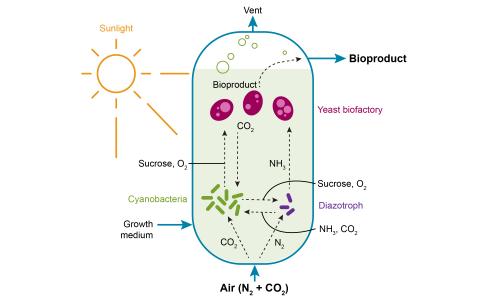This study investigates how circadian clock regulation impacts carbon partitioning between storage, growth, and product synthesis in Synechococcus elongatus PCC 7942 in providing insights for potential strategies for enhanced bioproduction. In our analysis we explore circadian regulatory rewiring of carbon metabolism and redox balancing and identify two potential approaches enabling better temporal separation between cell growth, carbon storage accumulation, and product synthesis phases.
Citation
Gilliam A, Sadler NC, Li X, Garcia M, Johnson Z, Veličković M, Kim YM, Feng S, Qian WJ, Cheung MS, Bohutskyi P. Cyanobacterial circadian regulation enhances bioproduction under subjective nighttime through rewiring of carbon partitioning dynamics, redox balance orchestration, and cell cycle modulation. Microb Cell Fact. 2025 Mar 8;24(1):56. doi: 10.1186/s12934-025-02665-5. PMID: 40055679; PMCID: PMC11889915.
Projects (2)
Predictive Phenomics Initiative (PPI) Project Data Catalog Collection The Predictive Phenomics Initiative (PPI) is an internal LDRD investment at Pacific Northwest National Laboratory focused on unraveling the mysteries of molecular function in complex biological systems. Explore PPI research...
Category
Datasets
17
The research goal of this project is to establish model synthetic microbial communities to understand the rules regulating their biological function in order to utilize them as next generation bioproduction platforms capable of reducing carbon and nitrogen footprints in biomanufacturing processes.
Category
Datasets
4



